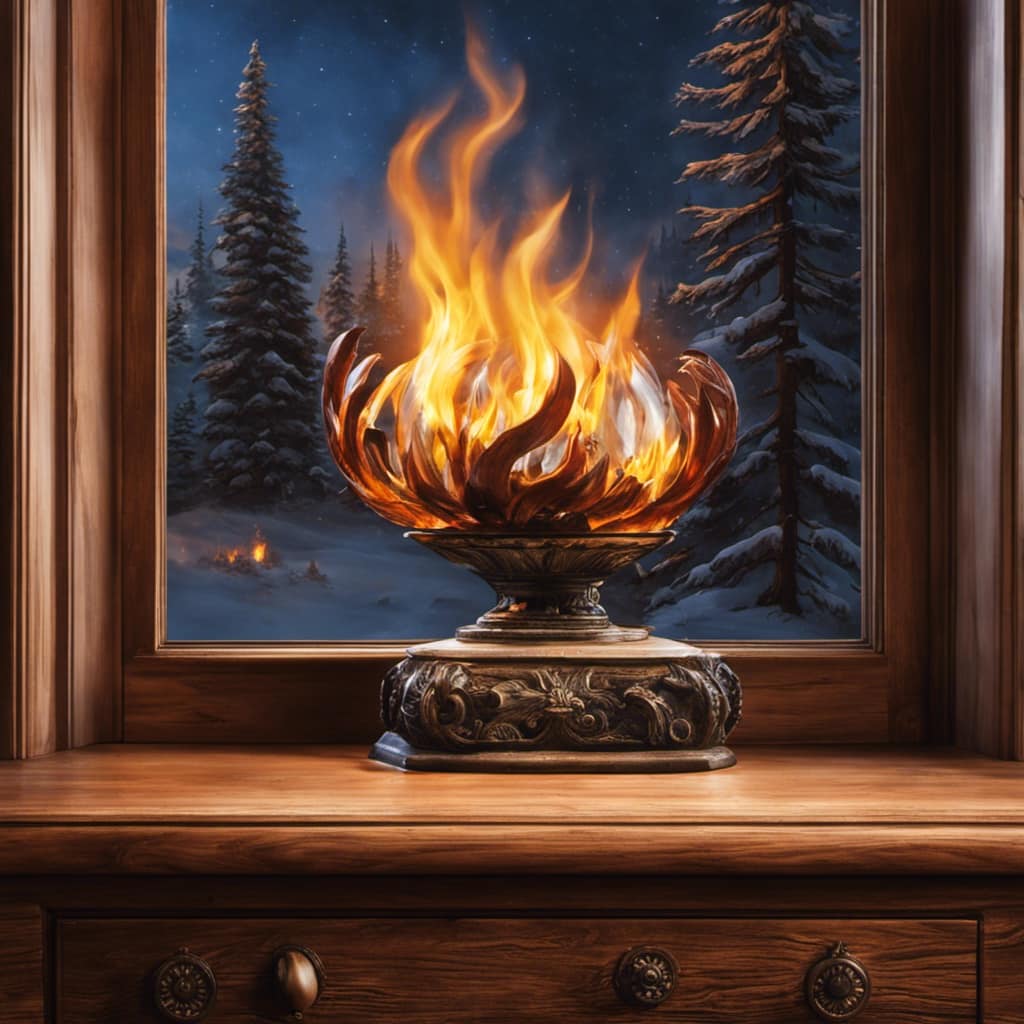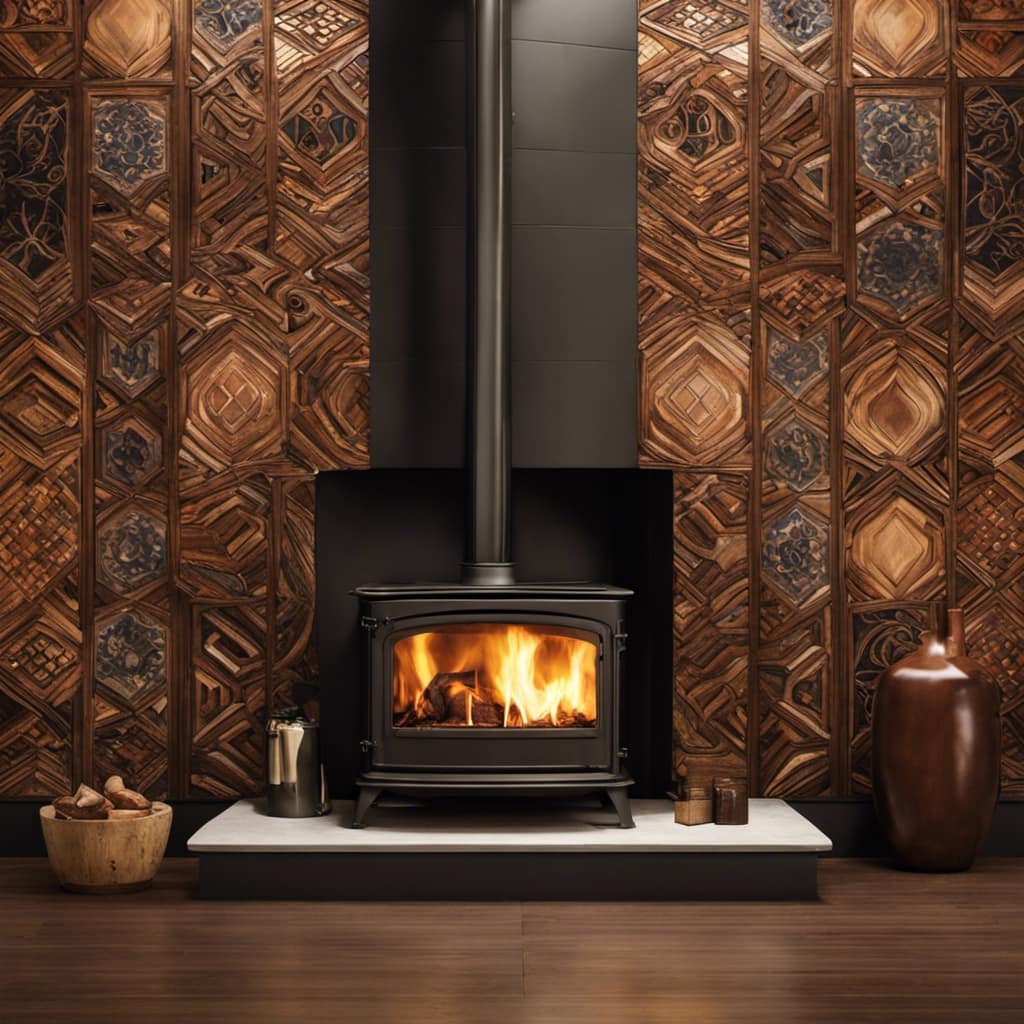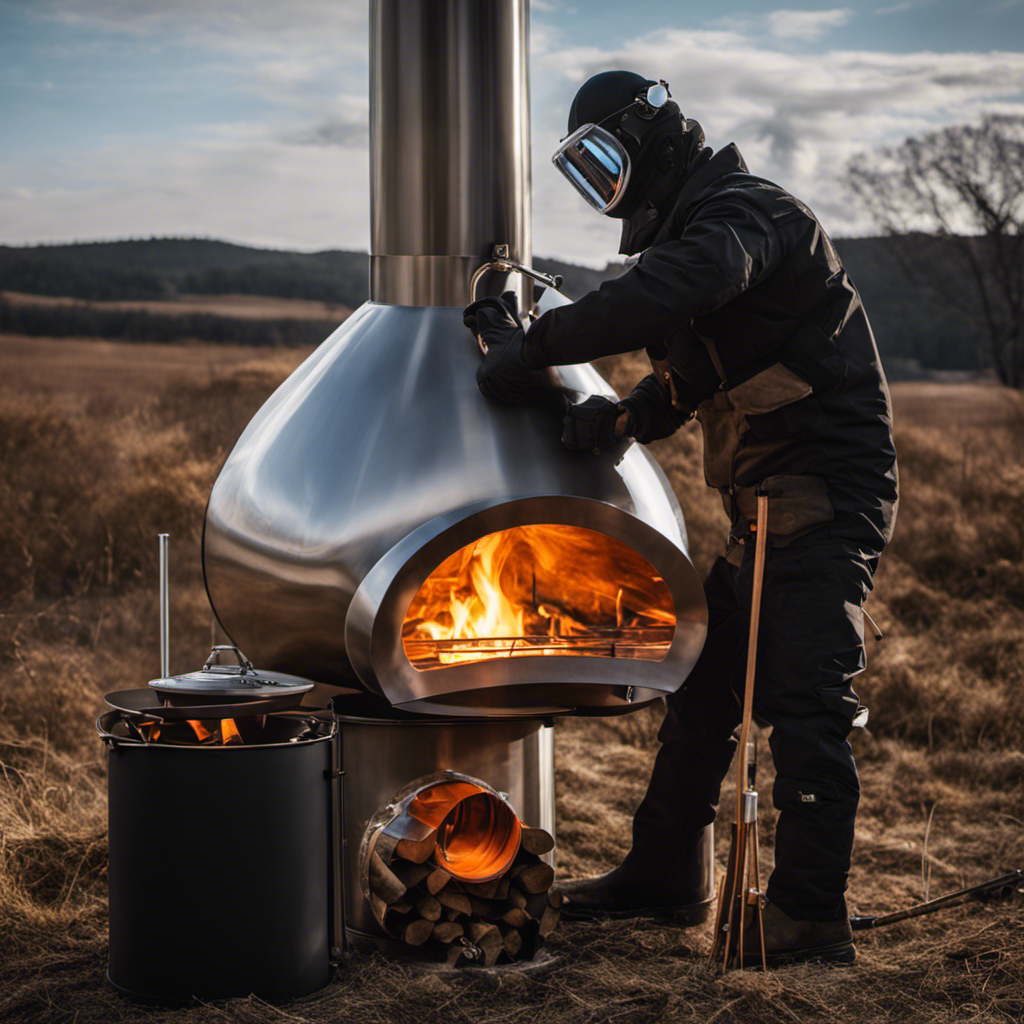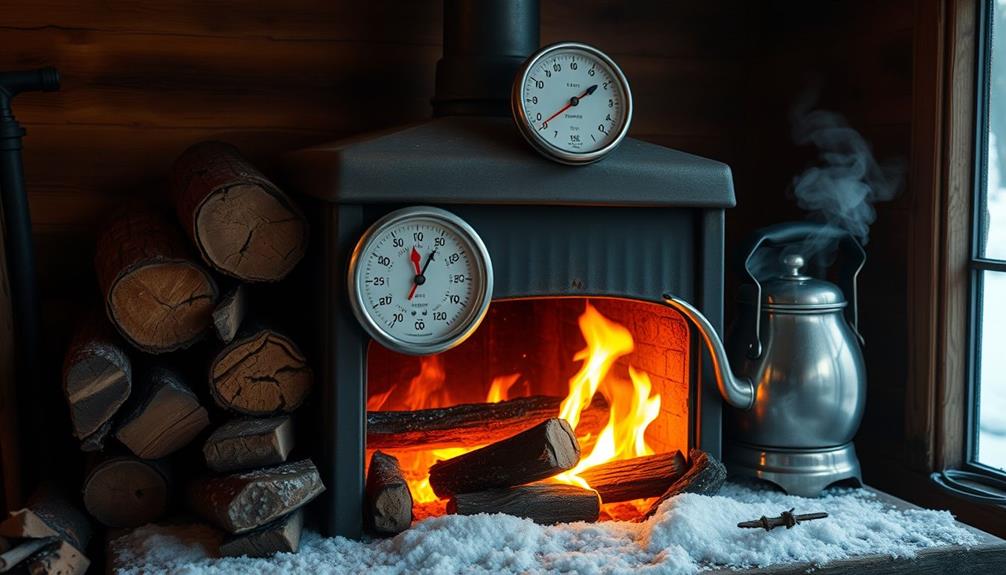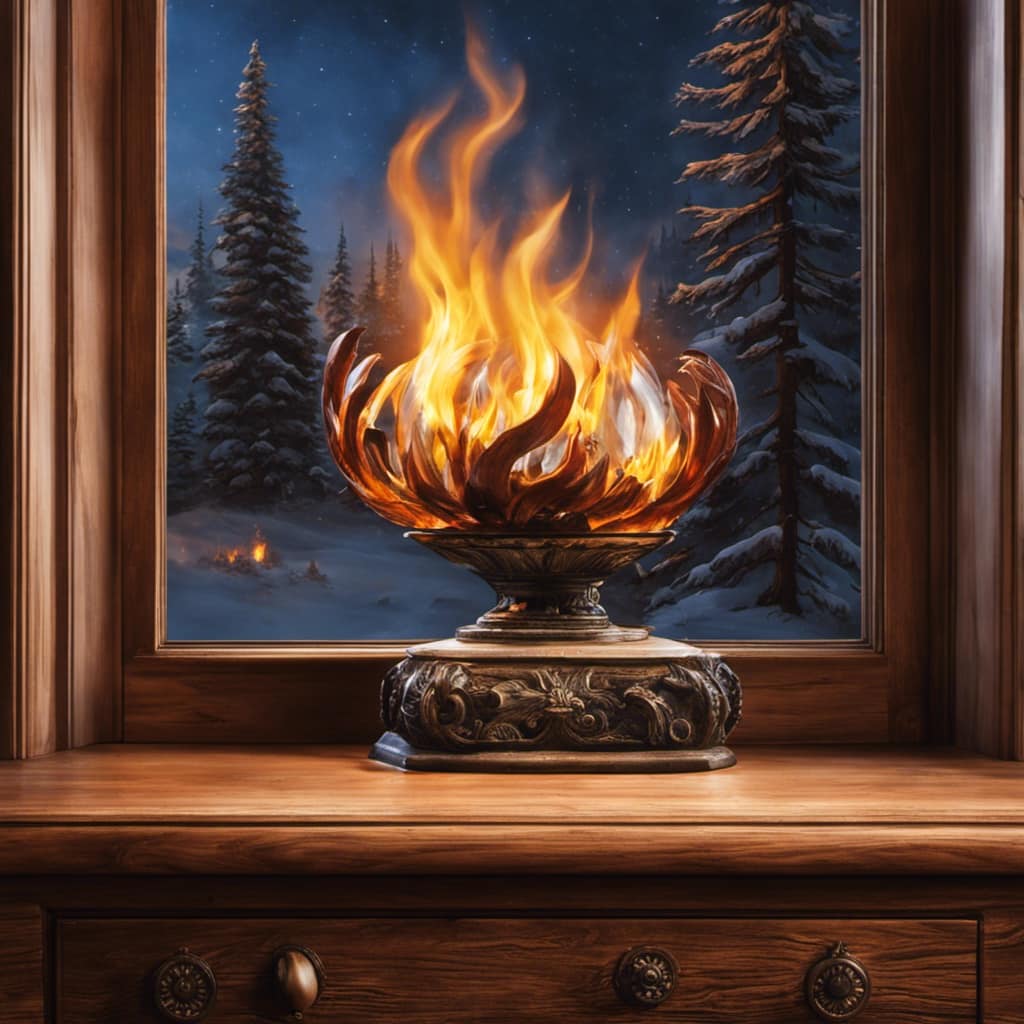
Wondering how to safely channel smoke from a wood stove through a wall? Look no further! In this article, I will guide you through a comprehensive, step-by-step method to make sure your wood stove is vented through a wall in a manner that adheres to appropriate airflow and safety regulations.
We’ll discuss how to assess the wall for venting requirements, gather the necessary tools and materials, plan the stovepipe route and placement, and finally, install the stovepipe.
So, let’s get started and make your wood stove installation a breeze!
Key Takeaways
- Measure the thickness of the wall and consider wall insulation and exterior wall construction to determine venting requirements.
- Choose the right wood stove and gather tools and materials such as a tape measure, level, and pipe cutter.
- Plan the stovepipe route and placement, considering room layout and clearance requirements.
- Properly install stovepipe through the wall, using the appropriate material and following manufacturer’s guidelines to ensure secure and efficient fit.
Assessing the Wall for Venting Requirements
I need to measure the thickness of the wall to determine the proper venting requirements for the wood stove.
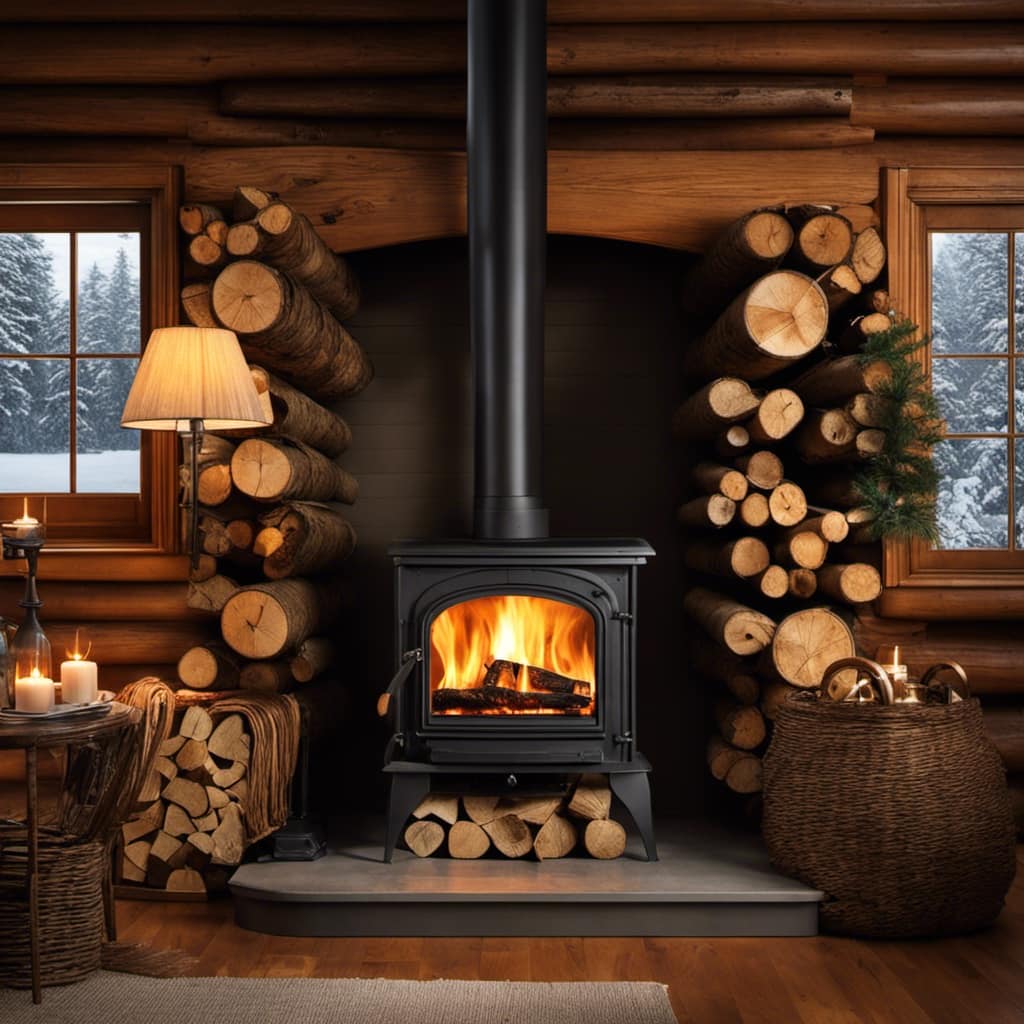
When assessing the wall for venting requirements, it’s crucial to consider the wall insulation and exterior wall construction.
The type and thickness of the wall insulation can affect the venting options available, as it can impact the clearance requirements for the vent pipe.
Additionally, the construction of the exterior wall, whether it’s made of brick, stone, or wood, can determine the appropriate venting materials and installation techniques.
It’s essential to ensure that the venting system is properly installed and meets all safety regulations to prevent any potential hazards.
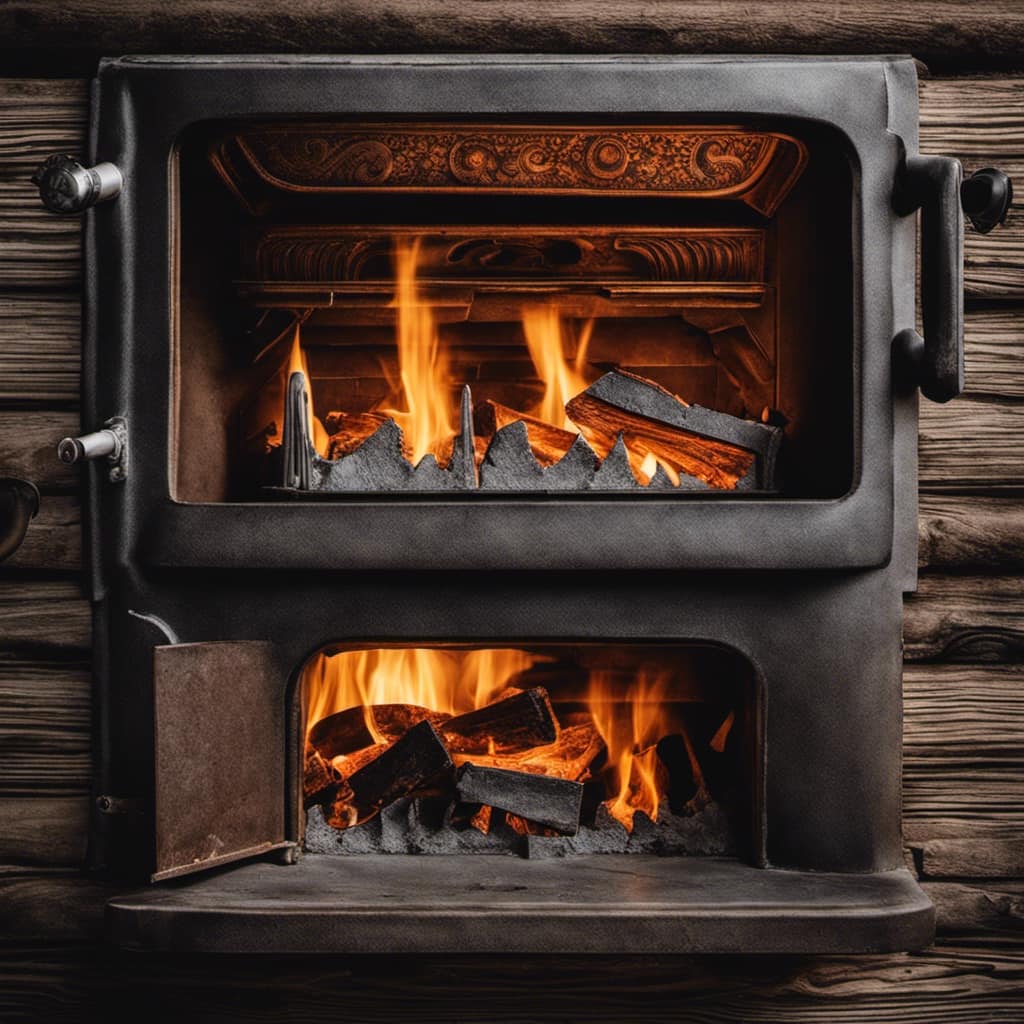
Therefore, accurate measurements and a thorough understanding of the wall composition are vital when determining the venting requirements for a wood stove.
Gathering the Necessary Tools and Materials
To get started, I just need to gather all the tools and materials I’ll need.
When choosing the right wood stove, it’s important to consider factors such as size, heat output, and efficiency.
Once I’ve the stove, I’ll need to measure for proper stovepipe length. This involves measuring the distance from the stove to the wall where the pipe will exit, as well as accounting for any bends or offsets in the pipe route. The stovepipe should be long enough to extend through the wall and have the proper clearance from combustible materials.
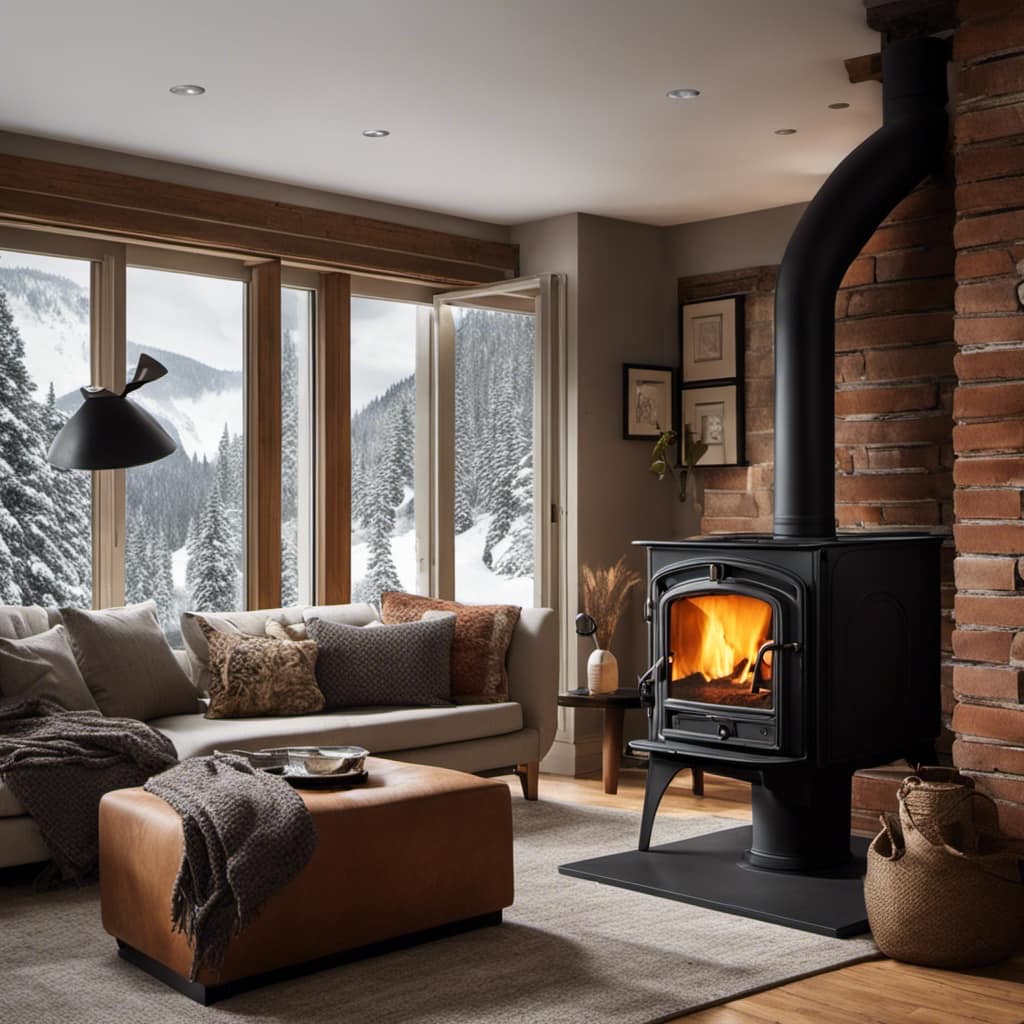
With the necessary tools, such as a tape measure, level, and pipe cutter, along with the appropriate materials, including stovepipe sections, elbows, and wall thimble, I can now move on to planning the stovepipe route and placement.
Planning the Stovepipe Route and Placement
Once I determine the best route and placement for the stovepipe, I can ensure proper ventilation and safety in my wood stove installation.
Here’s how I plan the stovepipe route and placement:
Evaluate the room layout: I consider the location of windows, doors, and other furniture to determine the most efficient and effective route for the stovepipe.
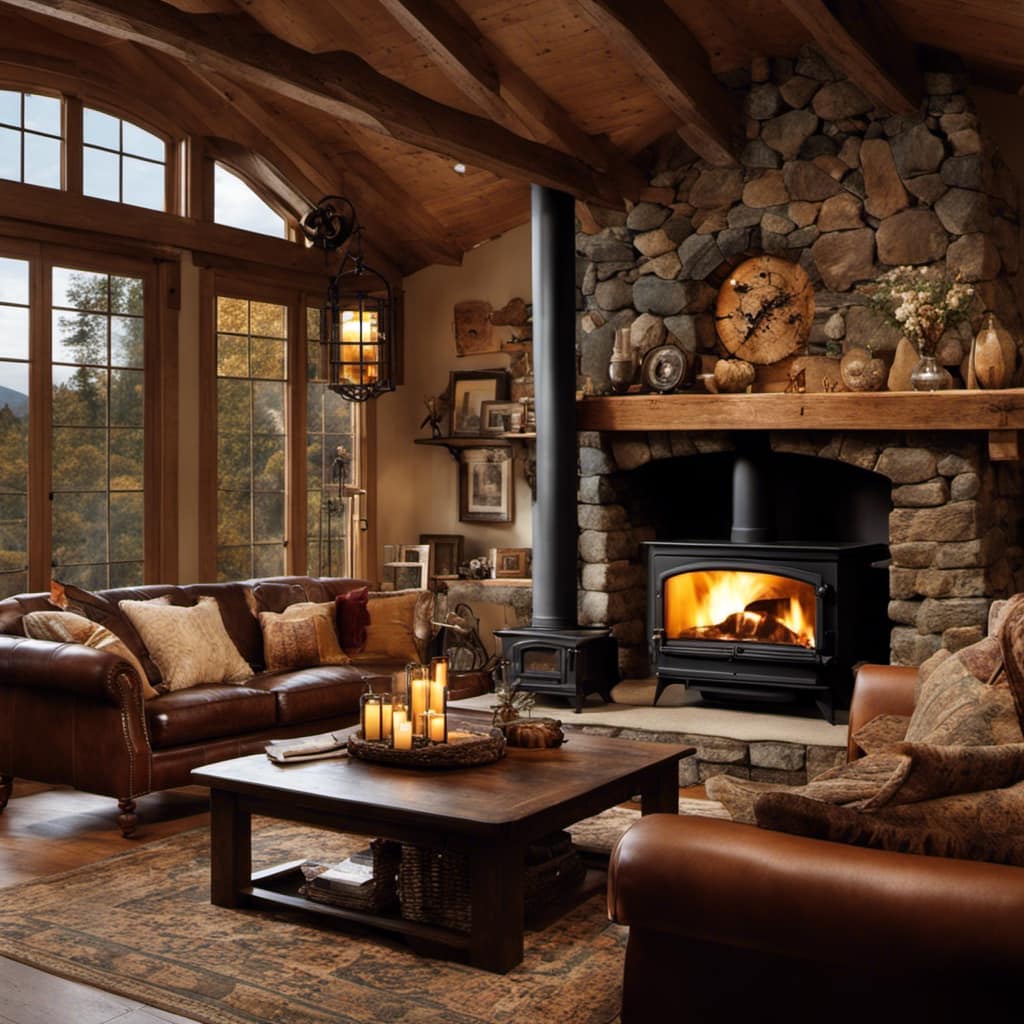
Choose the right wood stove: It’s crucial to select a stove that’s appropriate for the size of the space and meets safety regulations. This ensures efficient burning and minimal emissions.
Measure and cut the stovepipe: Accurate measurements are essential for a proper fit. I carefully measure the distance from the stove to the wall and cut the stovepipe accordingly, using a pipe cutter or tin snips.
Consider clearance requirements: I refer to the manufacturer’s guidelines to determine the necessary clearance between the stovepipe and any combustible materials, such as walls or ceilings.
Installing the Stovepipe Through the Wall
Installing the stovepipe properly requires careful consideration of the wall structure and measurements for a secure and efficient fit. When installing a wood stove, it is crucial to choose the right stovepipe to ensure proper venting and safety. The stovepipe serves as a connection between the wood stove and the chimney, allowing the smoke and gases to escape. To guide you in selecting the appropriate stovepipe, refer to the table below:
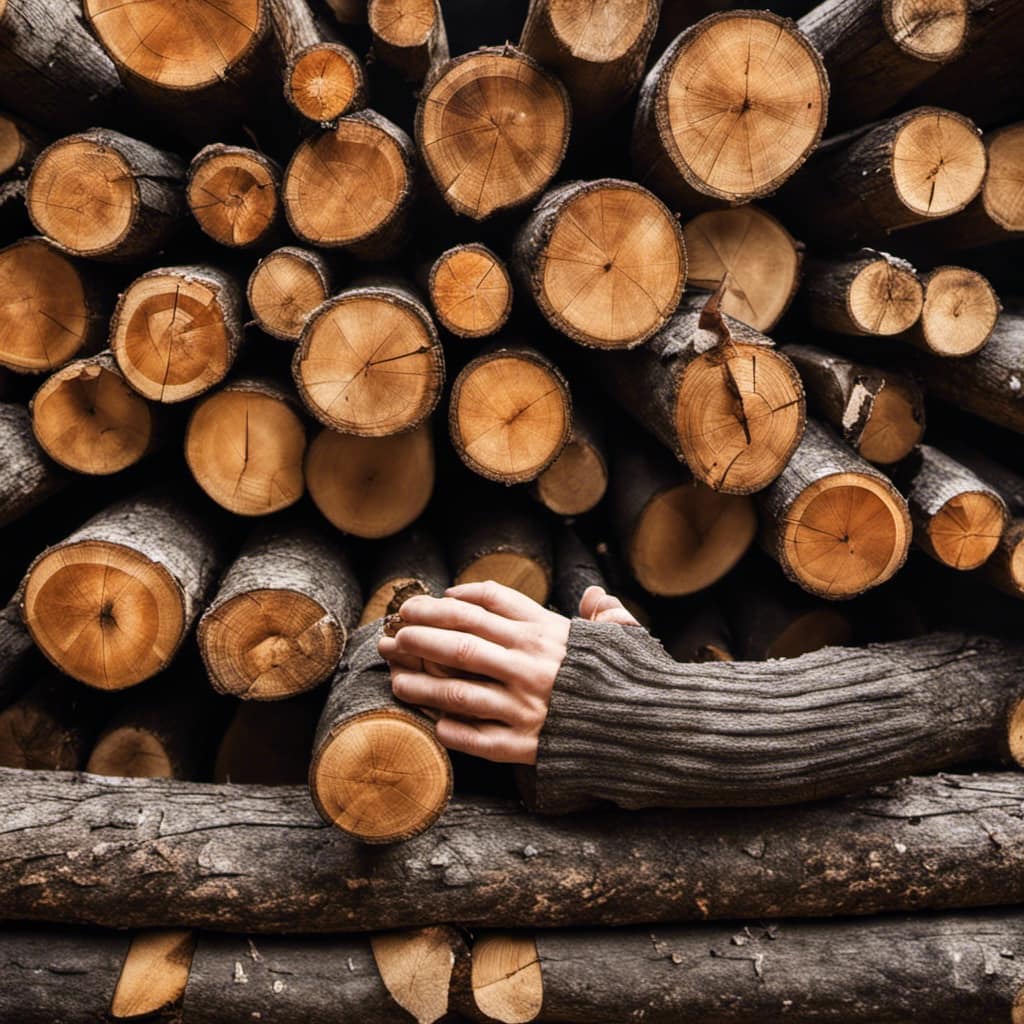
| Stovepipe Material | Clearances to Combustibles | Durability |
|---|---|---|
| Single-wall | Smallest clearance | Less durable, prone to rusting |
| Double-wall | Larger clearance | More durable, better insulation |
Consider the material, clearances to combustibles, and durability when making your decision. Once you have chosen the right stovepipe, follow the manufacturer’s instructions for installation. This will ensure a proper and safe connection between the wood stove and the chimney, minimizing the risk of fire hazards. Now, let’s move on to the next section, where we will discuss ensuring proper venting and safety measures.
Ensuring Proper Venting and Safety Measures
I need to ensure that the stovepipe is properly vented and that all necessary safety measures are in place. When it comes to venting regulations and maintenance tips, here are four important points to consider:
Choose the right type of stovepipe: It should be made of durable material, such as stainless steel, and have a proper diameter to ensure efficient airflow.
Follow local venting regulations: Different areas may have specific requirements for stovepipe installation, so it’s important to check with local authorities or building codes.
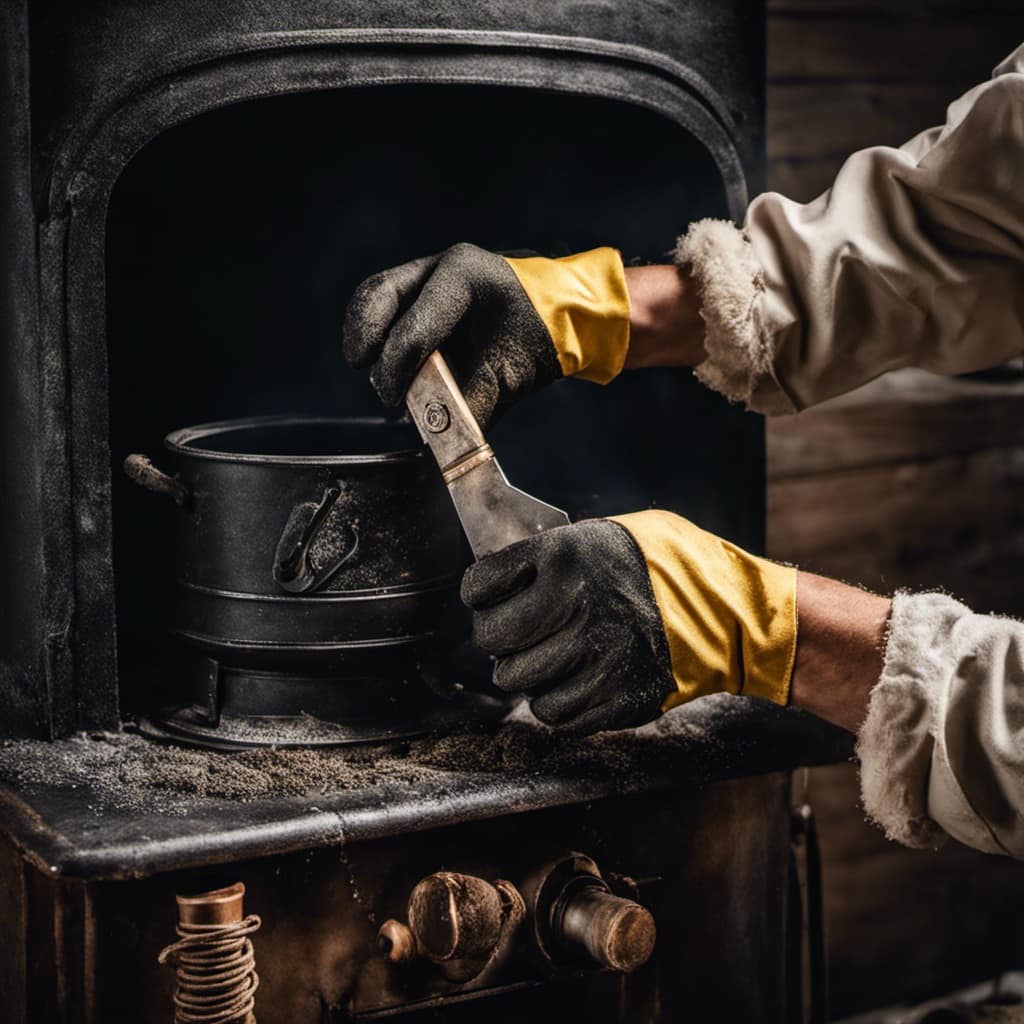
Install a chimney cap: This helps prevent debris and animals from entering the chimney, while also providing protection against rain and snow.
Regularly inspect and clean the stovepipe: Over time, creosote and soot can build up, increasing the risk of a chimney fire. Regular inspections and cleanings will help prevent this.
Can I Use the Same Method to Pipe a Pellet Stove Through a Wall as I Would for a Wood Stove?
When installing a pellet stove, it’s crucial to recognize that the pelet and wood stove pipe requirements differ. Pellet stoves generally necessitate a specialized venting system due to the high efficiency and low-temperature exhaust. Unlike typical wood stove pipes, these systems are designed to handle the different combustion byproducts of pellet fuel.
Frequently Asked Questions
Is It Safe to Install a Wood Stove Pipe Through a Wall Made of Different Materials, Such as Brick or Stone?
Yes, it is safe to install a wood stove pipe through a wall made of different materials like brick or stone. The installation cost will vary based on the type of materials used.
Can I Install a Wood Stove Pipe Through an Exterior Wall Instead of an Interior Wall?
Certainly, installing a wood stove pipe through an exterior wall has its benefits. It allows for easier venting and minimizes the risk of fire hazards. Proper insulation and clearance are crucial for safe and efficient installation.
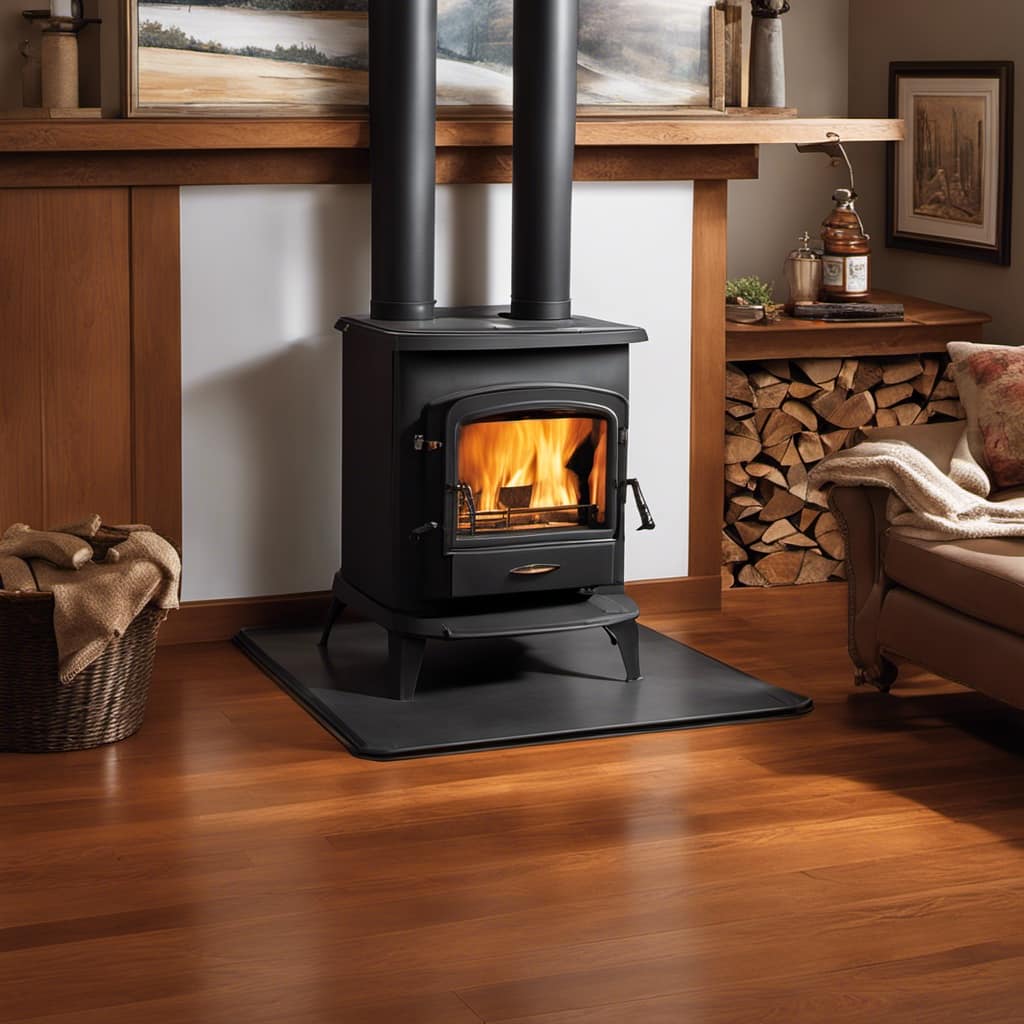
How Do I Determine the Appropriate Height for the Wood Stove Pipe Exit on the Exterior Wall?
I determine the appropriate height for the wood stove pipe exit on the exterior wall by considering factors like clearance requirements, roof pitch, and local building codes. It’s crucial to ensure proper compatibility with the exterior wall.
Can I Use an Existing Chimney for Venting a Wood Stove Instead of Installing a Separate Stovepipe Through the Wall?
Using an existing chimney for venting a wood stove instead of installing a separate stovepipe through the wall has advantages. It saves time, money, and reduces the need for additional construction.
Are There Any Specific Regulations or Building Codes I Should Be Aware of When Installing a Wood Stove Pipe Through a Wall?
When installing a wood stove pipe through a wall, it is crucial to adhere to building code regulations and safety precautions. Familiarize yourself with local codes and ensure proper clearances to combustible materials.
Conclusion
In conclusion, by following the steps outlined in this article, you can successfully pipe your wood stove through a wall.
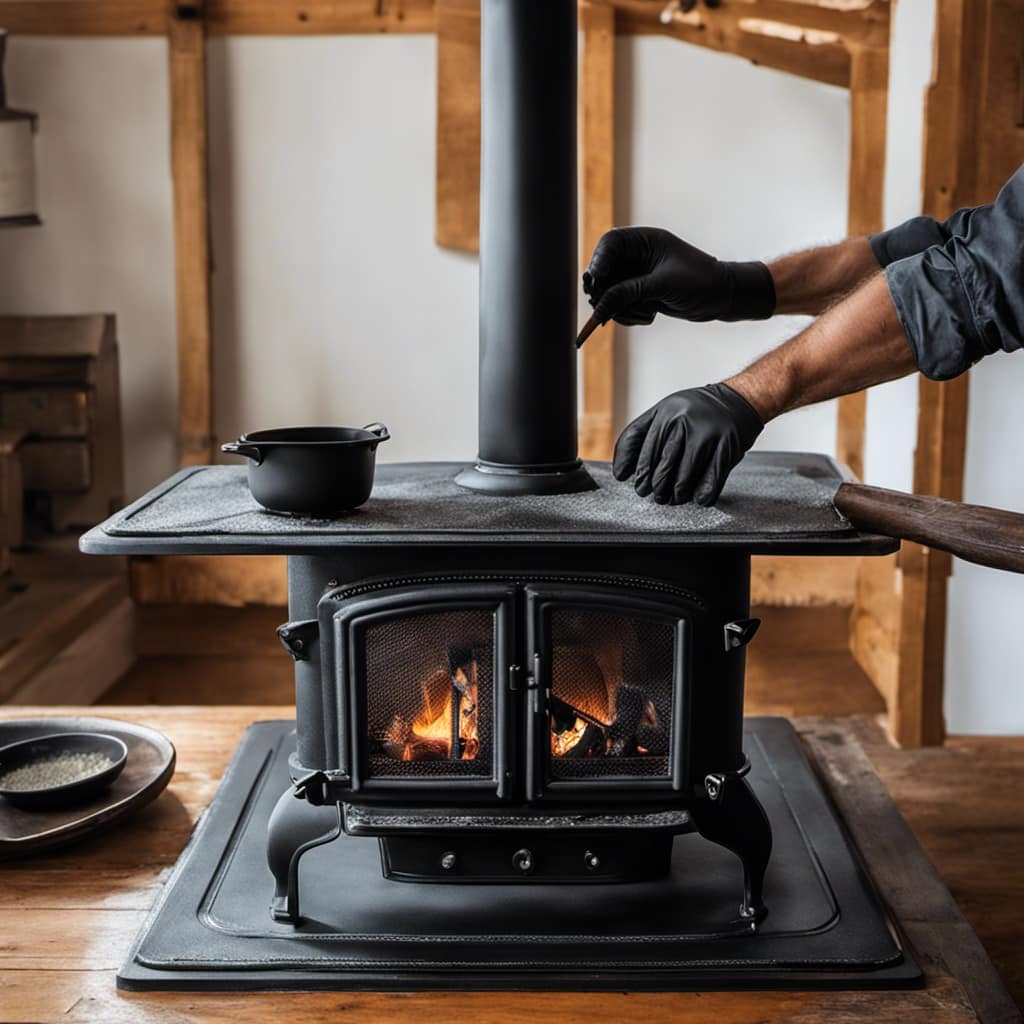
With the right tools and materials, careful planning and installation, and adherence to proper venting and safety measures, you can achieve a highly efficient and safe wood stove system.
Don’t let the task seem daunting; with a little effort, you’ll be enjoying the cozy warmth of your wood stove in no time.
Growing up surrounded by the vast beauty of nature, Sierra was always drawn to the call of the wild. While others sought the comfort of the familiar, she ventured out, embracing the unpredictable and finding stories in the heartbeat of nature.
At the epicenter of every remarkable venture lies a dynamic team—a fusion of diverse talents, visions, and passions. The essence of Best Small Wood Stoves is crafted and refined by such a trio: Sierra, Logan, and Terra. Their collective expertise has transformed the platform into a leading authority on small wood stoves, radiating warmth and knowledge in equal measure.

